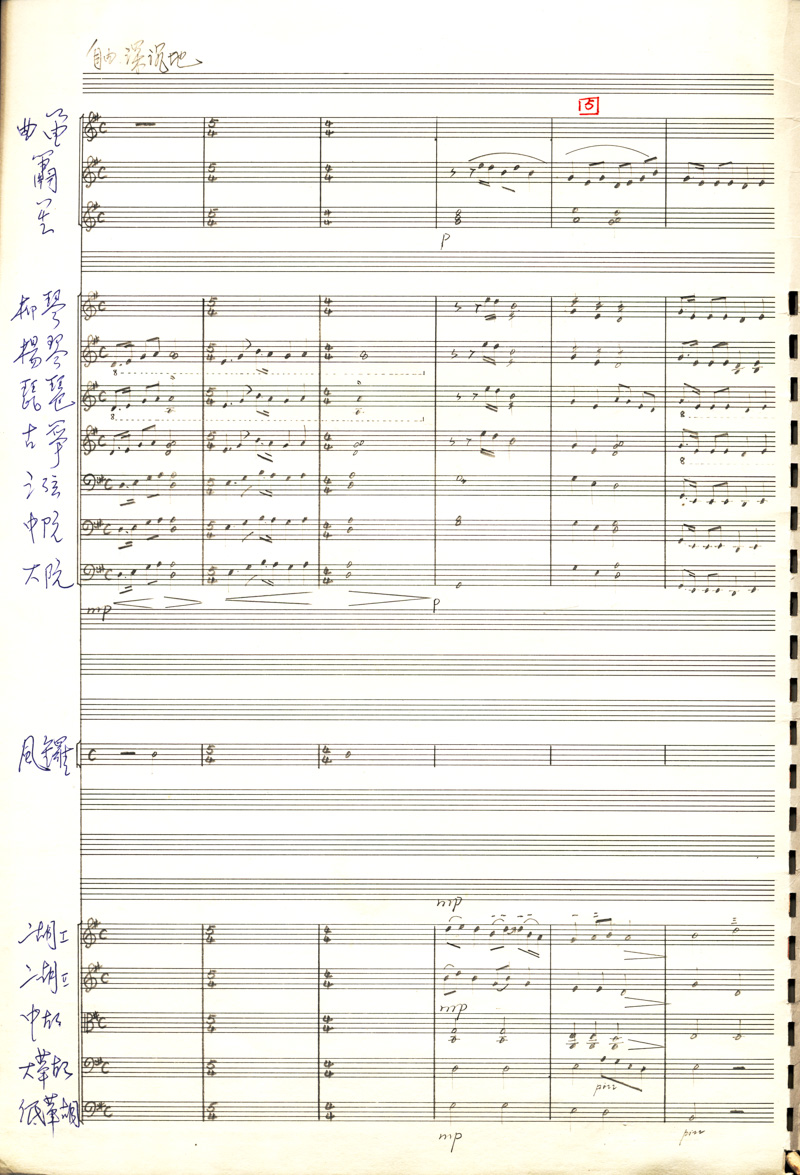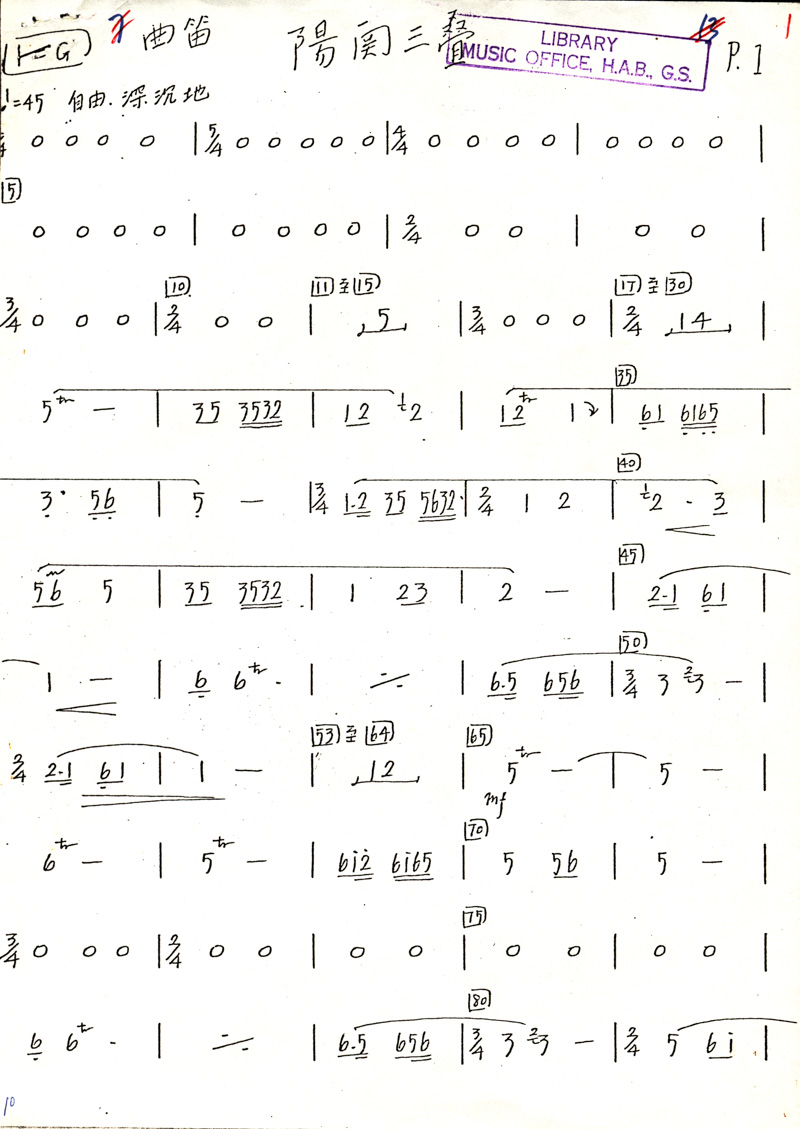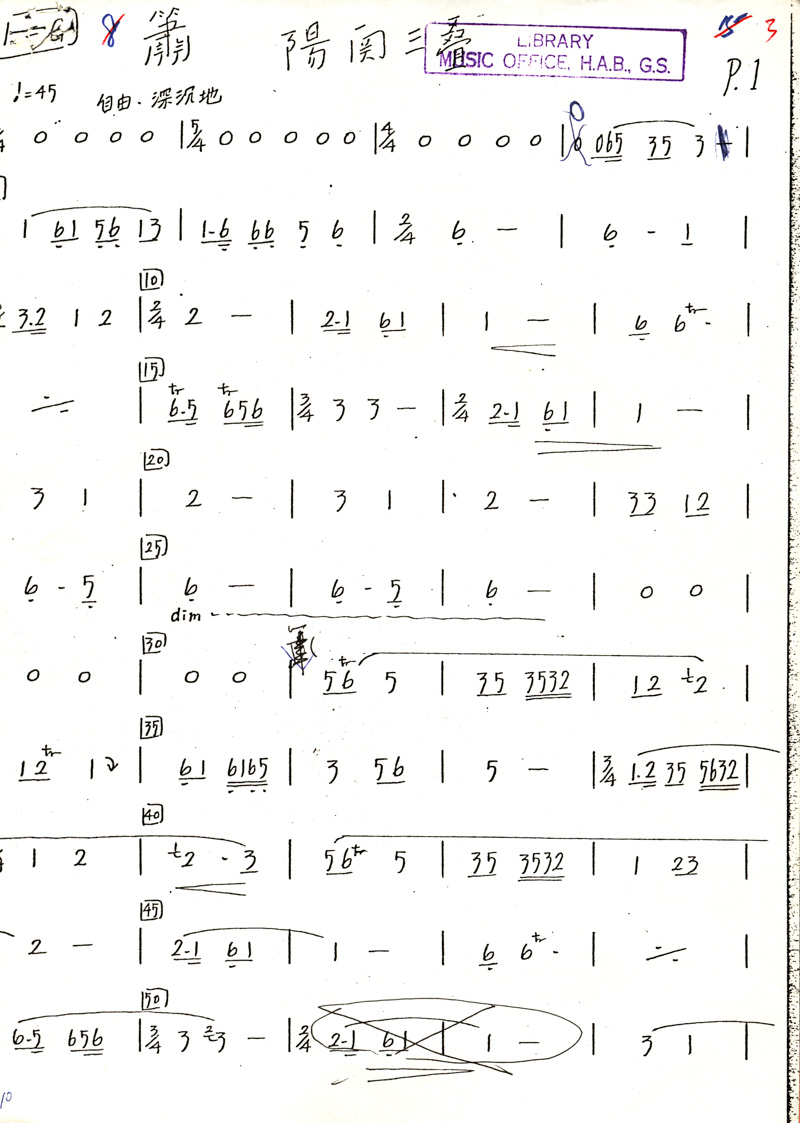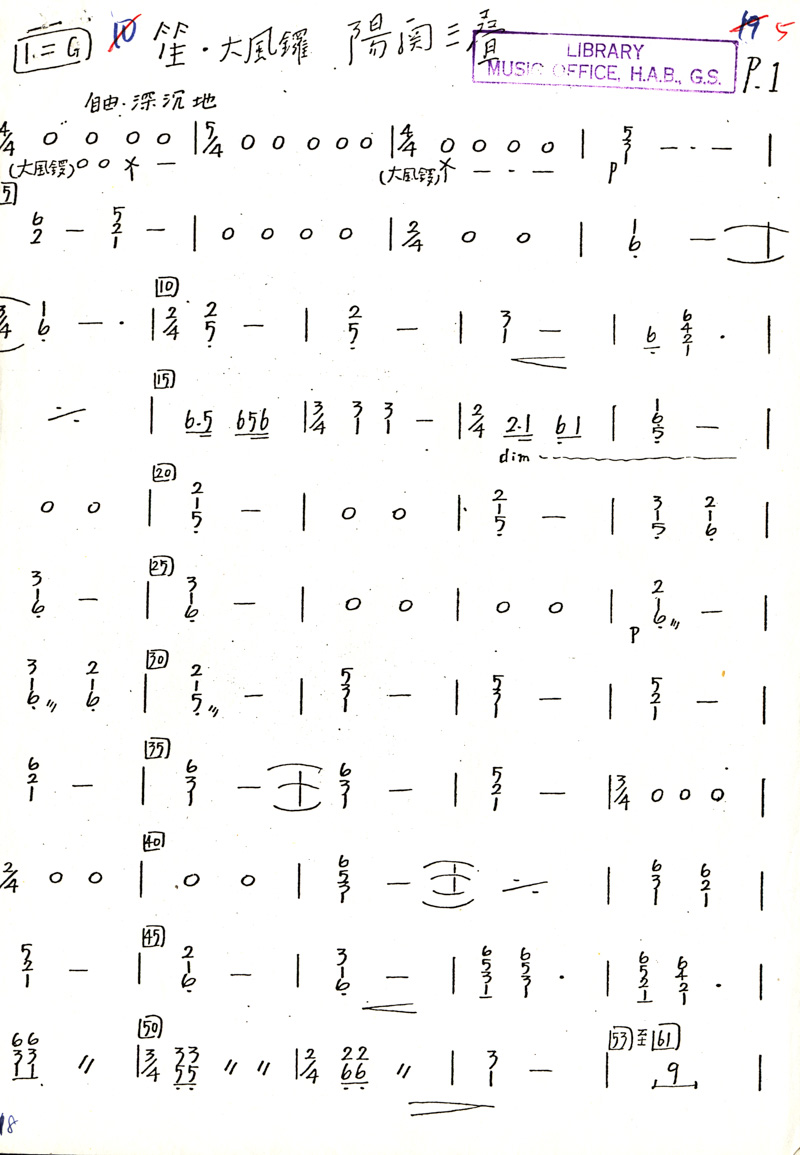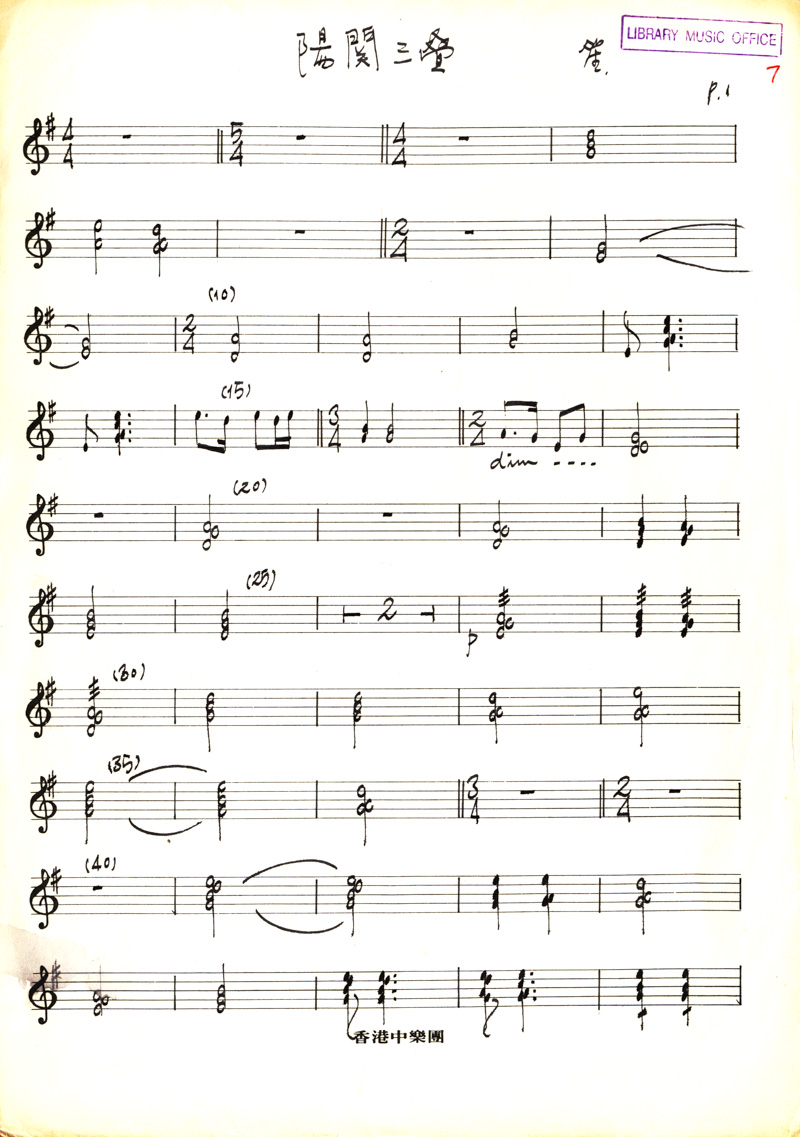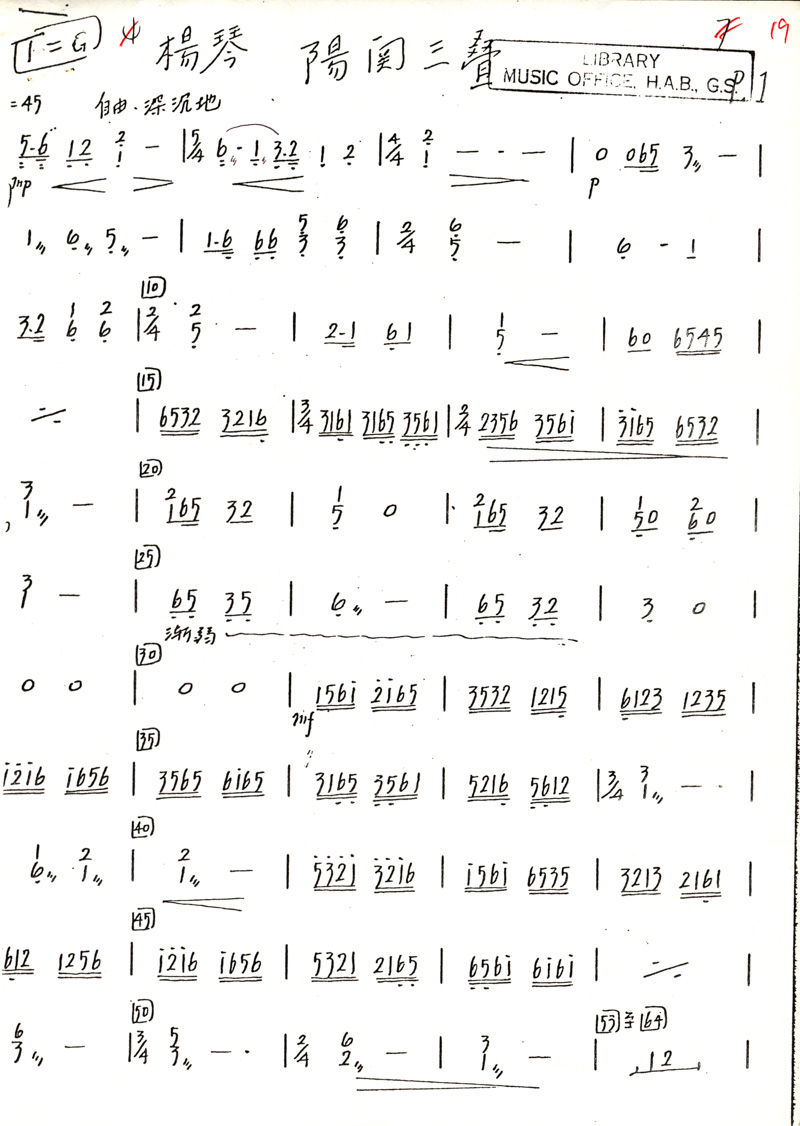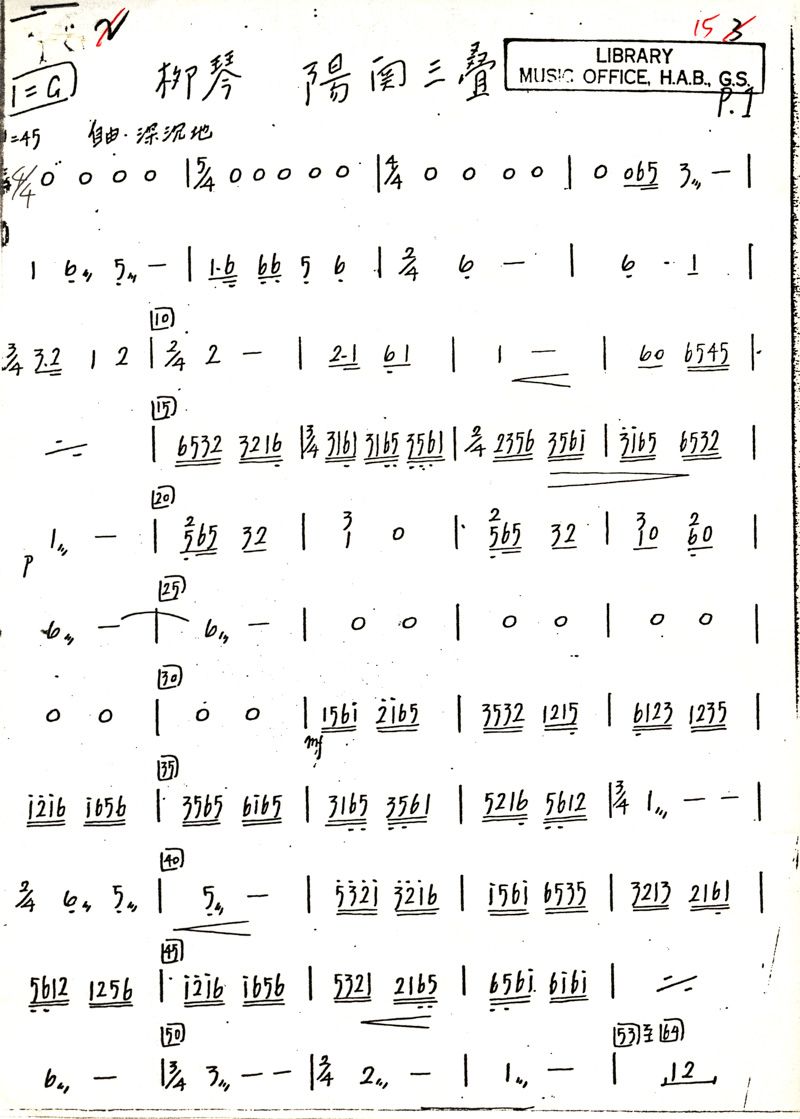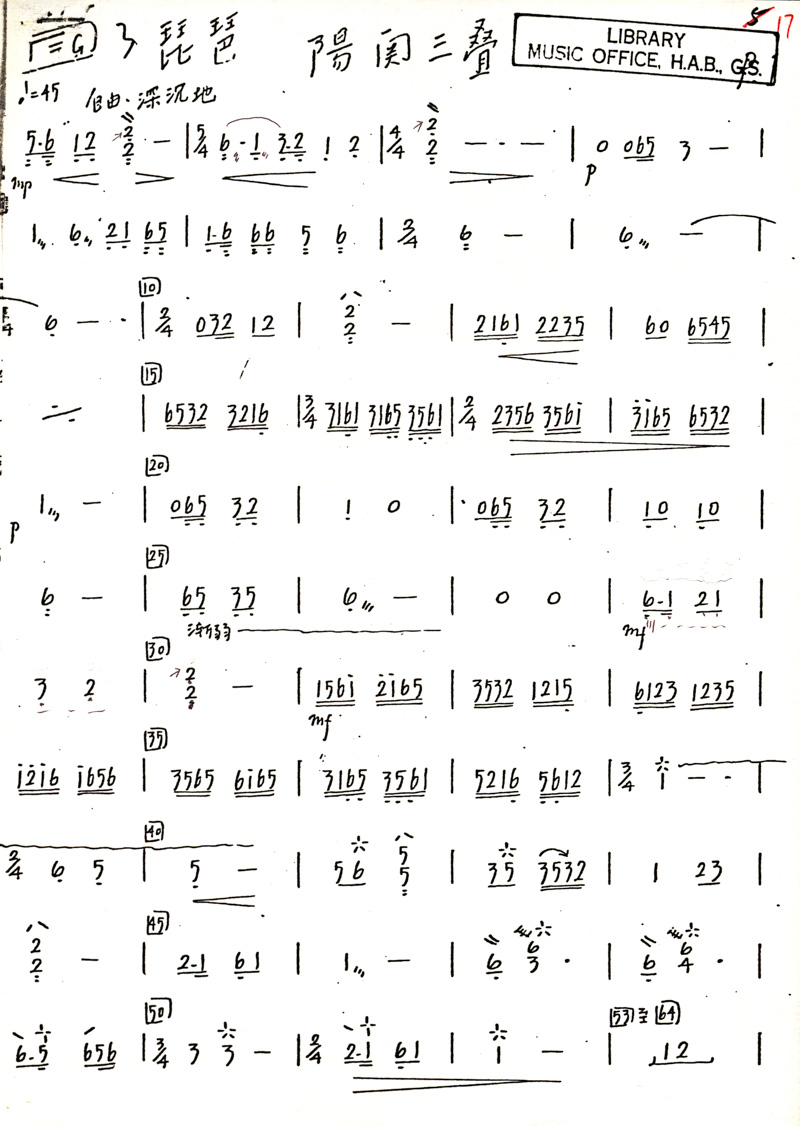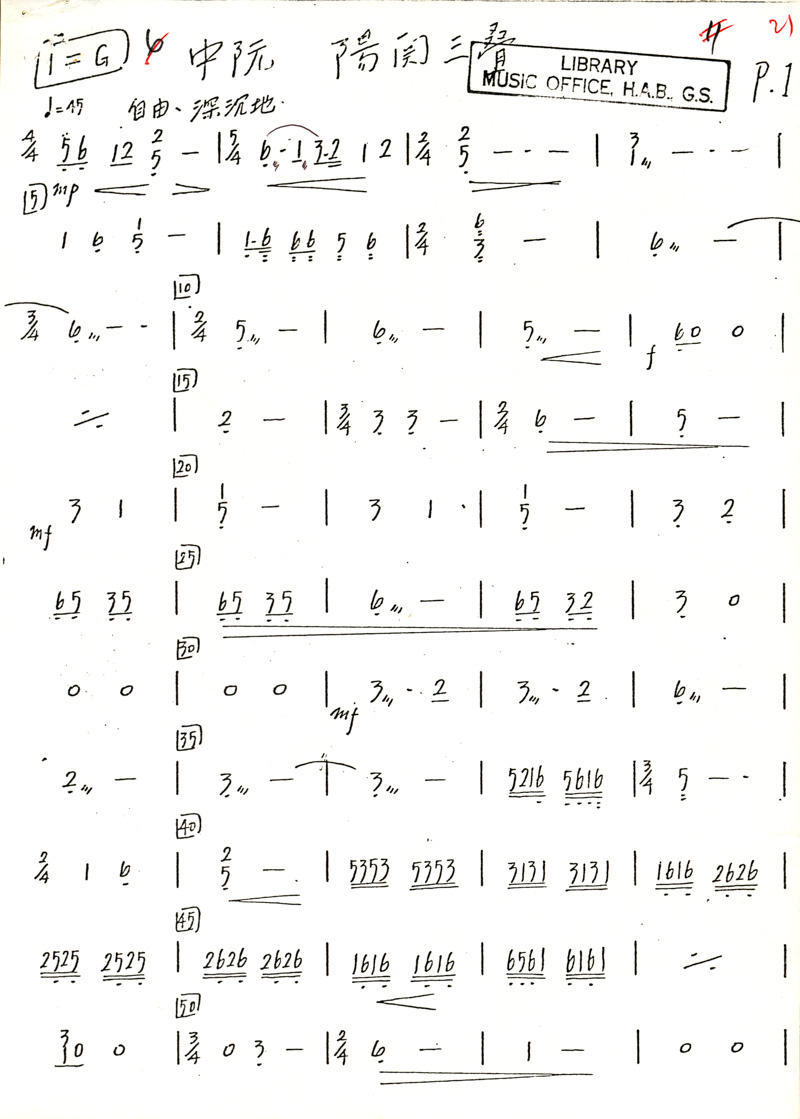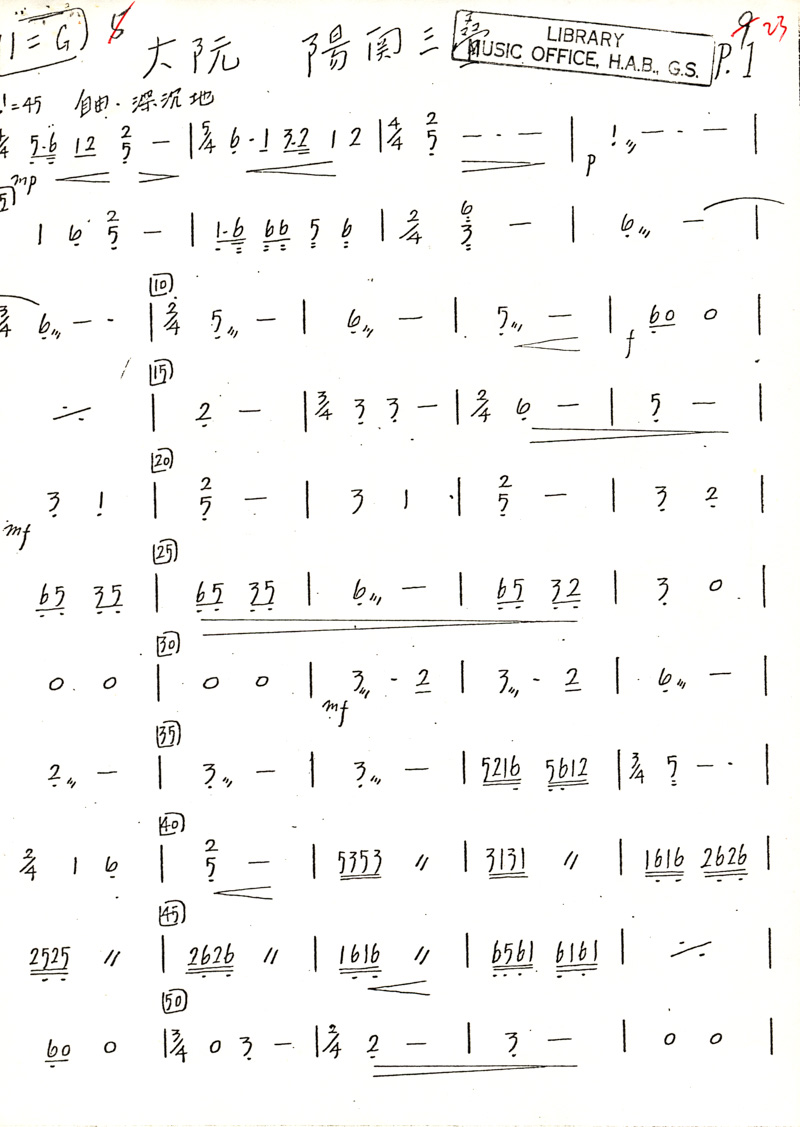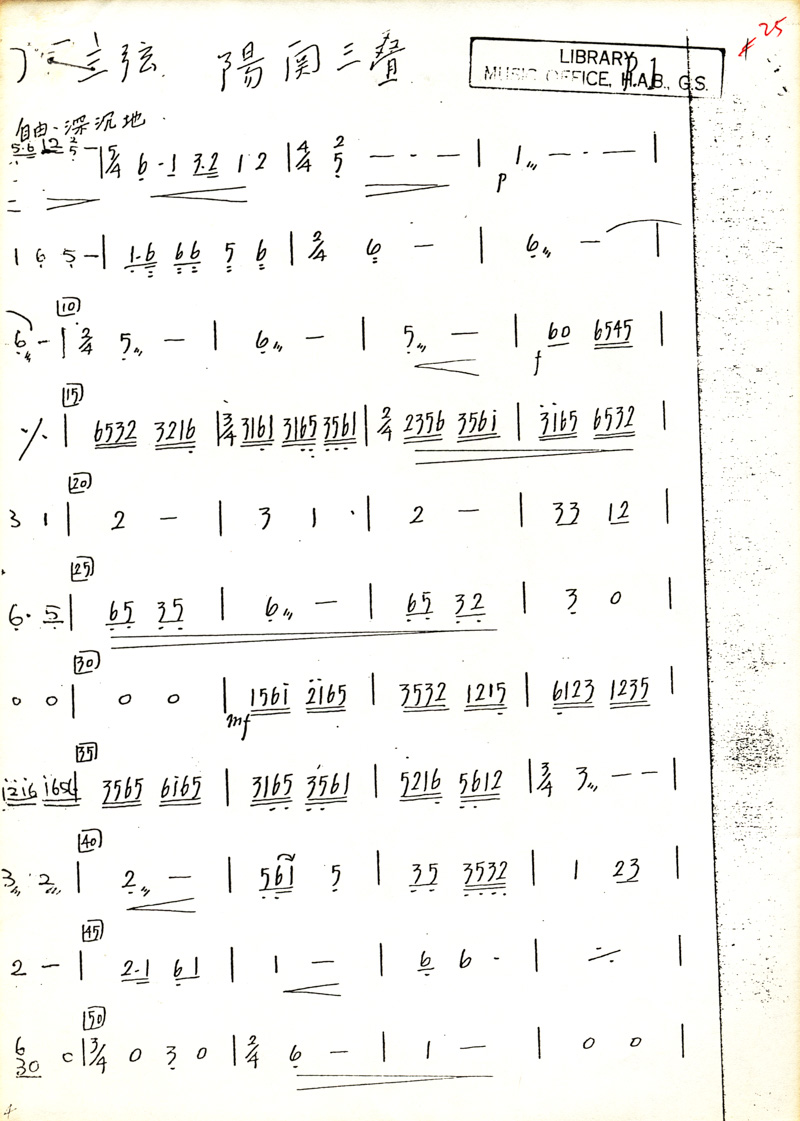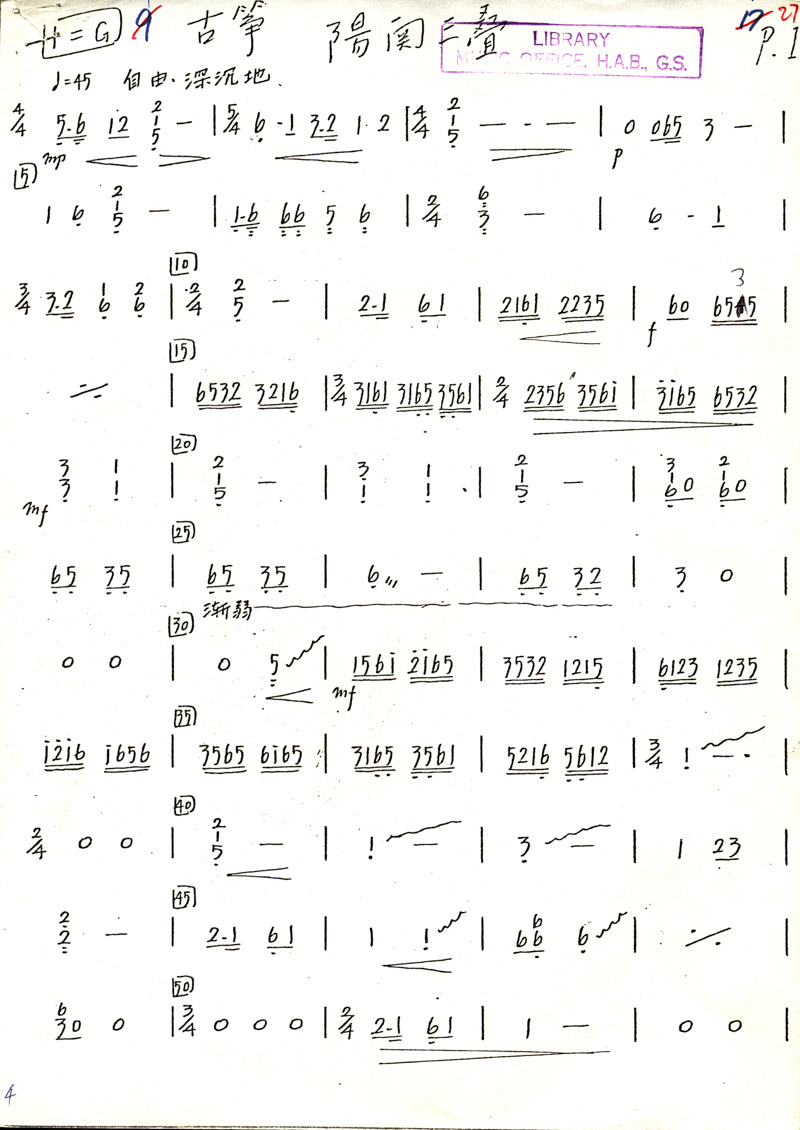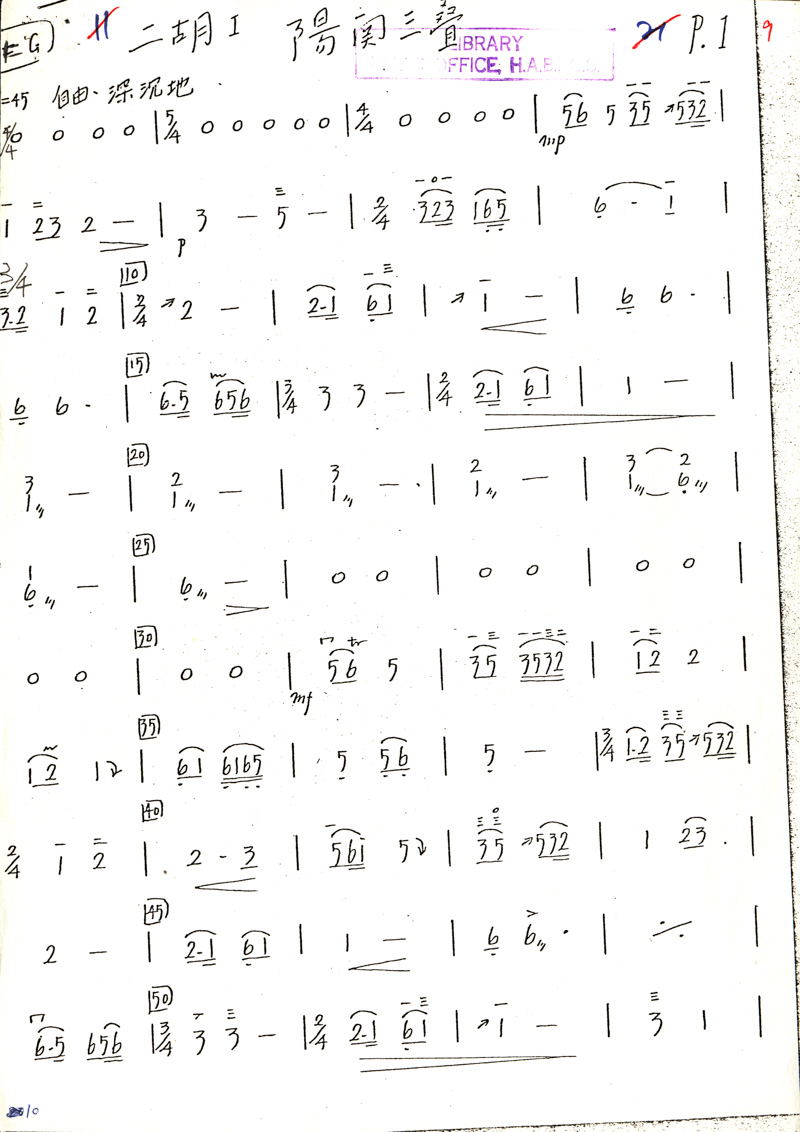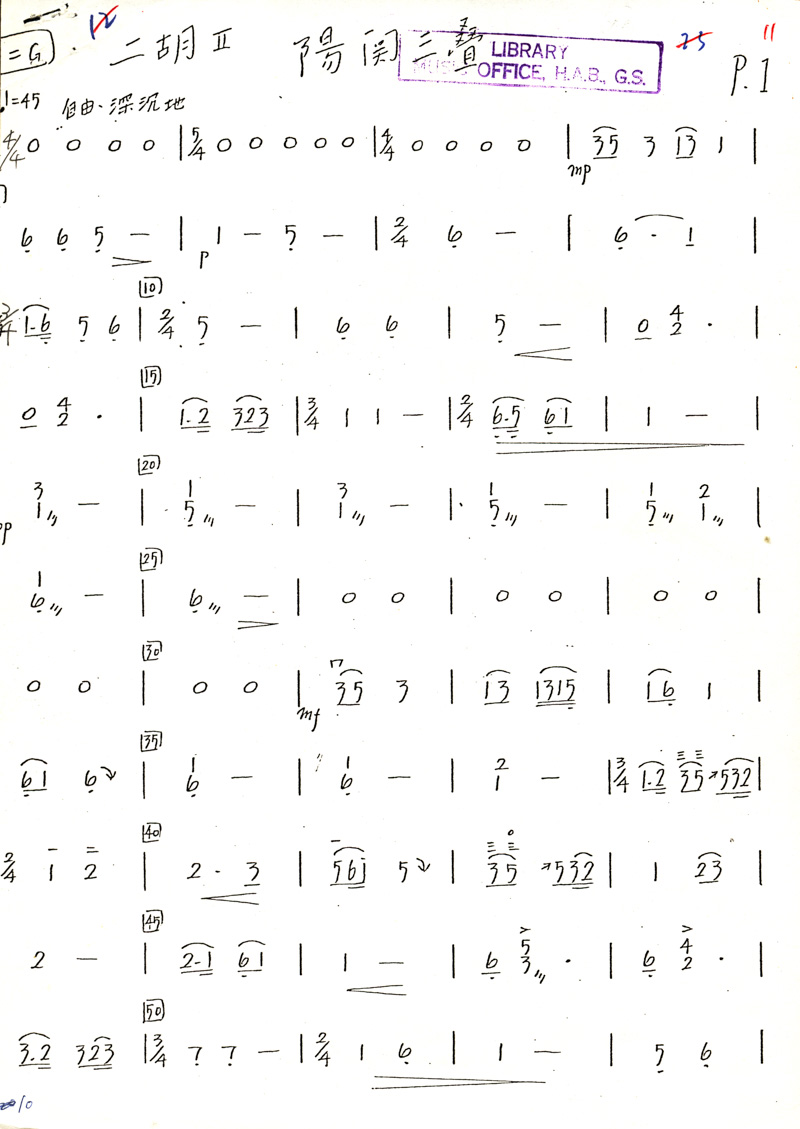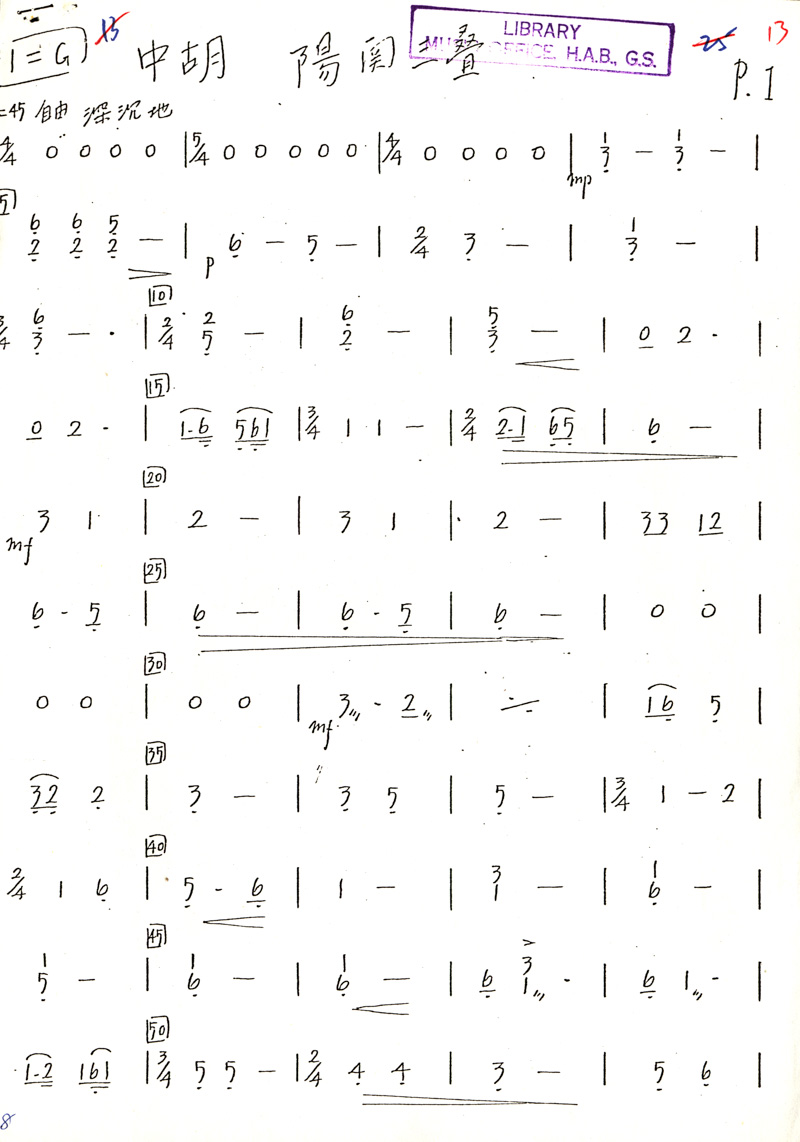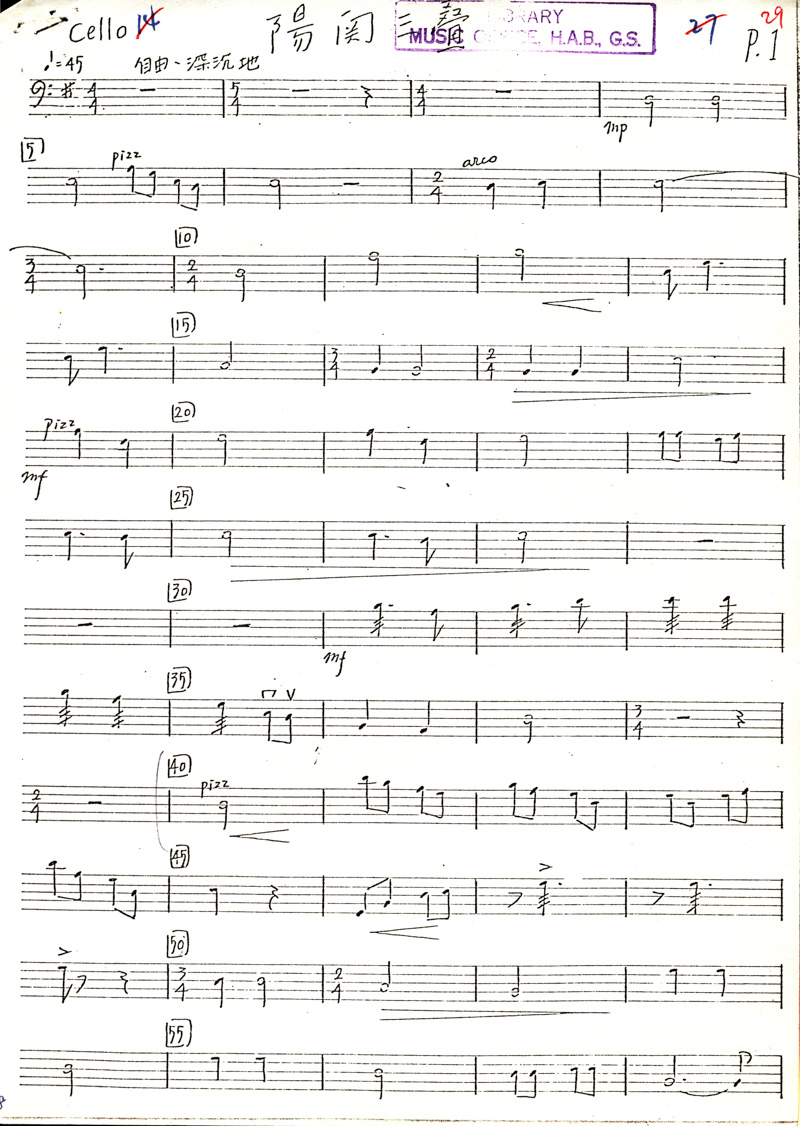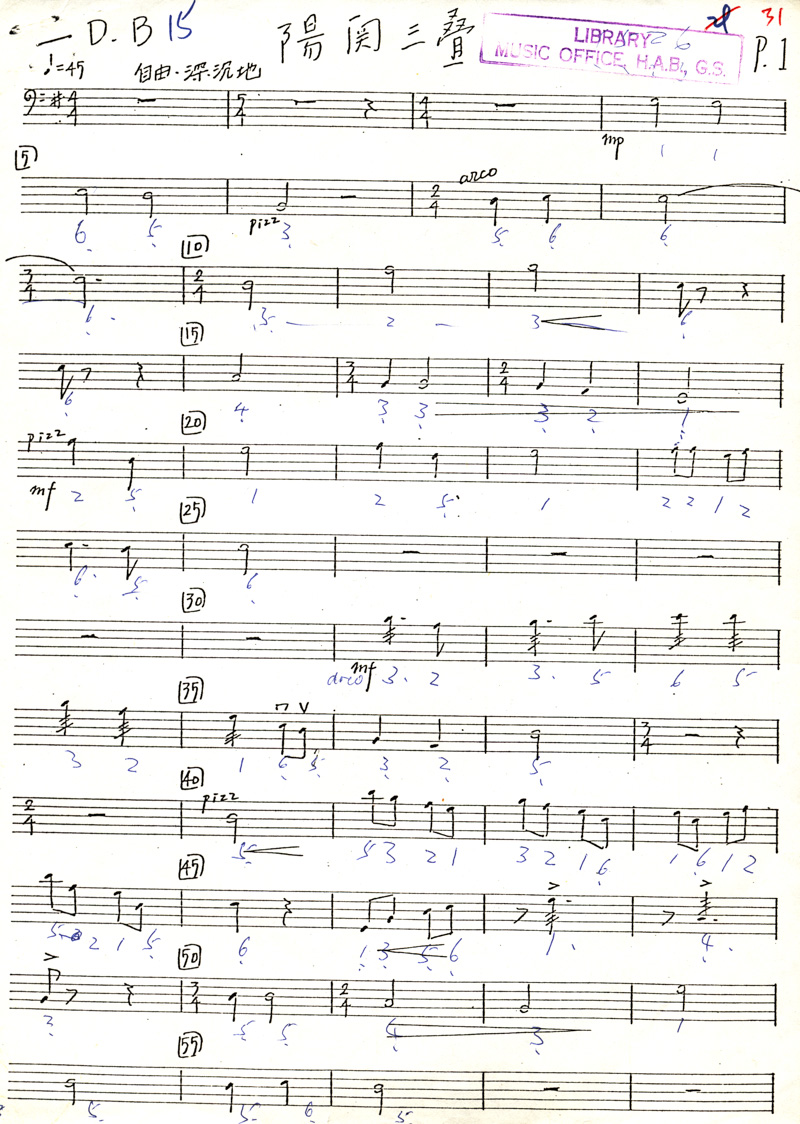Partitura Download
Title: Three variations on the Yang Pass: Chinese instrumental ensemble
Arranger:Tong Leung-tak
Year: November 2, 1979
Genre:
- Large ensemble
- Arrangement
- Chinese orchestral music
Call No.: SC328
Description: Yangguan sandie is perhaps best known as a classic piece in the qin repertoire among its many iterations in Chinese music. One could trace the origin of this piece to the poem Song Yuan Er shi Anxi ("Seeing Yuan Er off on a mission to the Anxi Protectorate") by Wang Wei (699–759). In the poem, Wang drinks with Yuan before Yuan departs for the Western Regions through the Yangguan mountain pass (in modern-day Gansu Province). Historical sources suggest that the poem was soon adapted into a song with qin accompaniment popularly sung as a farewell song for several centuries. It had become a common practice to sing the song three times, with lyrical or melodic modifications in each reprise-hence Yangguan sandie, by which most of its later iterations are named. The earliest extant notation for the piece, in the form of qin tablature with lyrics, is dated before 1491; the version most commonly used in today's qin repertoire is based on a score from 1876. "Three Variations on the Yang Pass" is Tong Leung-tak's arrangement for a Chinese instrumental ensemble (1979). Largely modeled on the qin piece, it employs a full range of plucked- and bowed-strings, as well as several wind instruments suitable for chamber performance, namely qudi, xiao, and sheng. It also features the musical sound of a specific type of Chinese gong (i.e., fengluo) at both the beginning and the end of the piece. It comprises three sections. The first section begins with the plucked strings playing the opening phrase in unison, resembling the way it would sound on a qin. The rest of the original melody is played by several instruments at a time and distributed across the ensemble, while the lower plucked strings play a steady, scalic counter-melody in accompaniment. The second and third sections intersperse the same melody with short, elaborated phrases, contributing to an increasingly dense sonic texture while concluding the arrangement with a subdued ending phrase played by a xiao.
Note:
- Orchestral arrangement of the guqin piece of the same title
Instrumentation: qu di (1), xiao (1), sheng/da fengluo (1), sheng (1), yangqin (1), liuqin (1), pipa (1), zhong ruan (1), da ruan (1), sanxian (1), zheng (1), erhu (2), zhonghu (1), cello (1), double bass (1)
